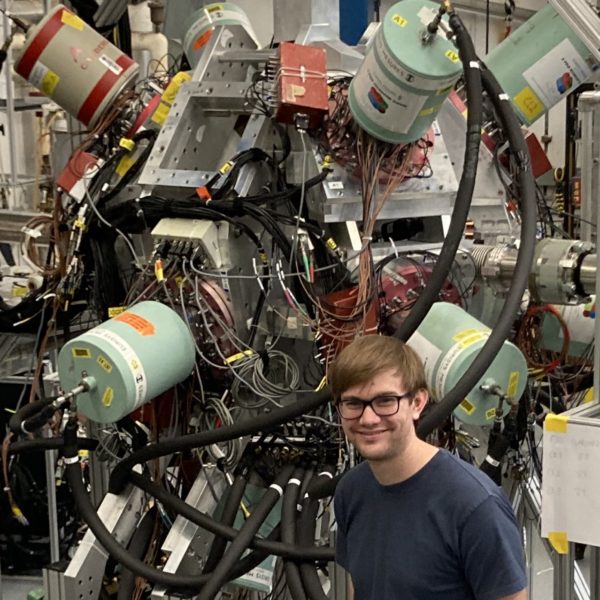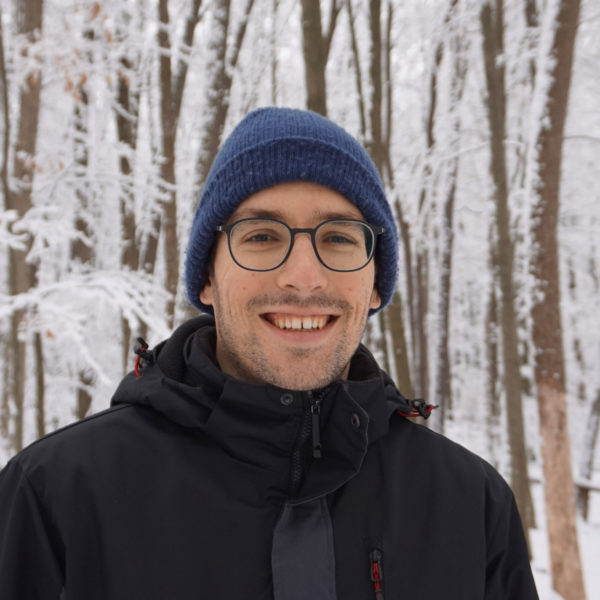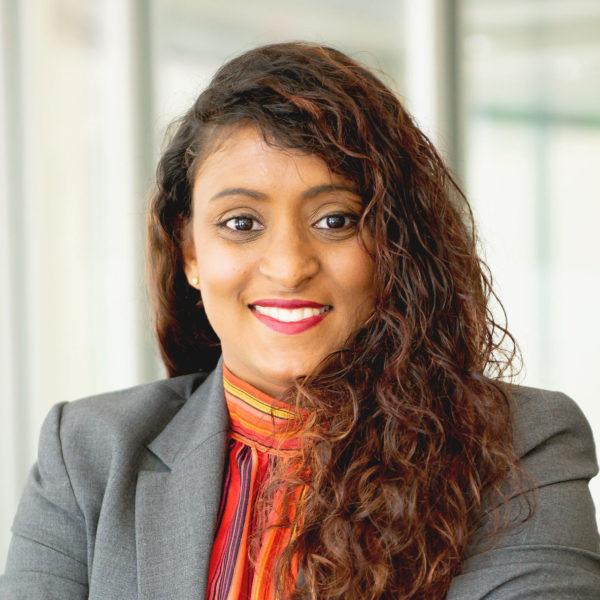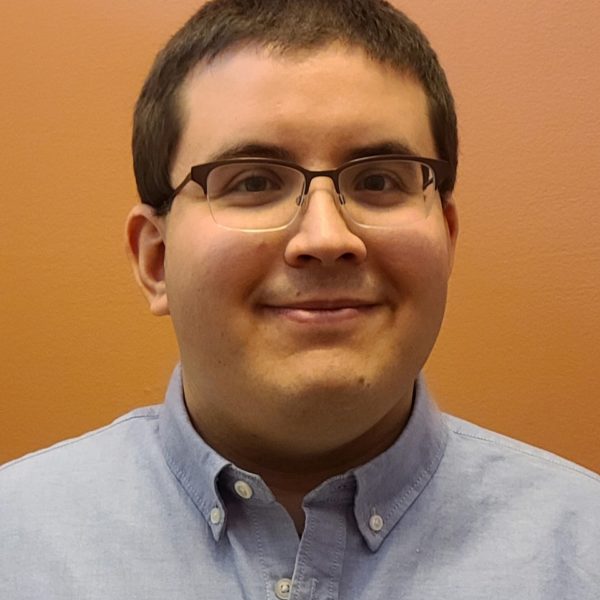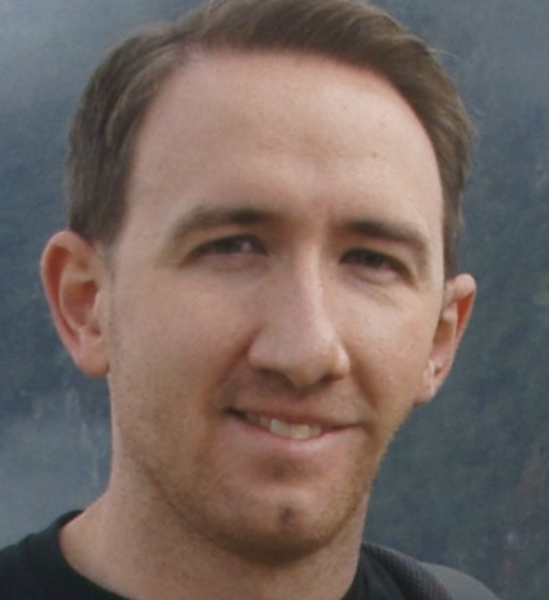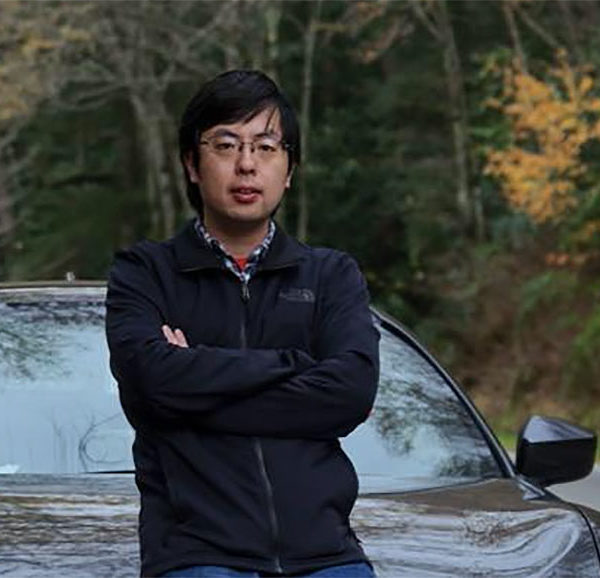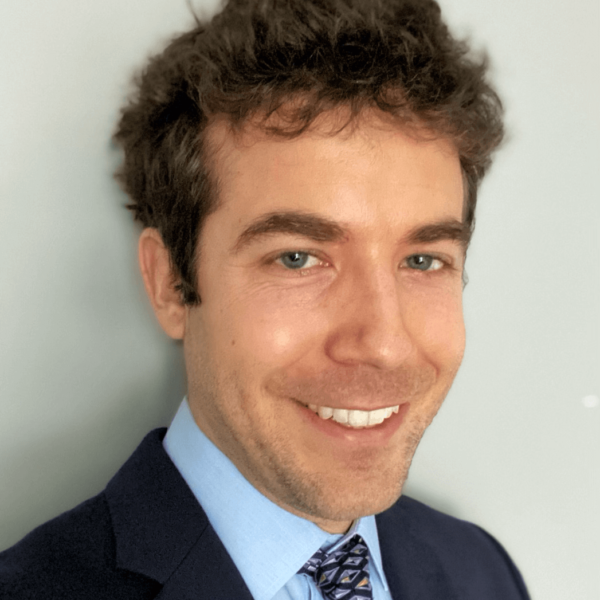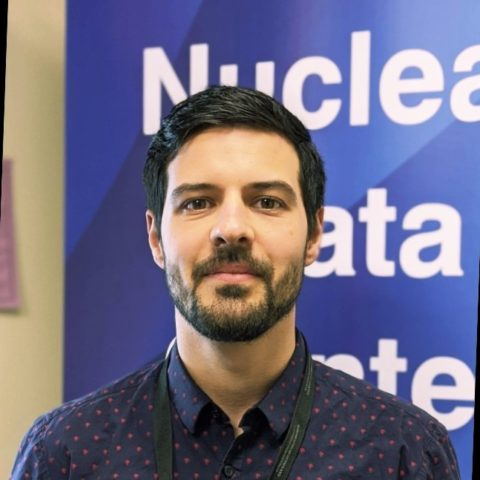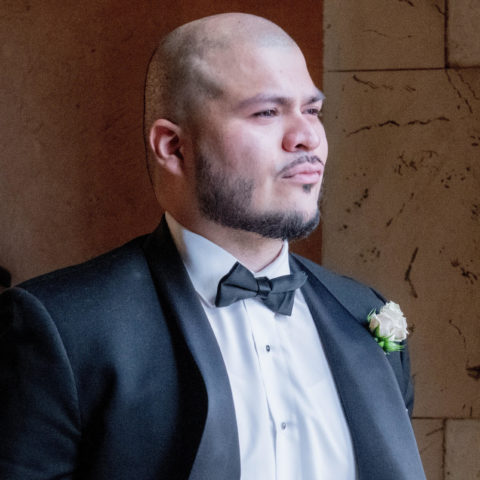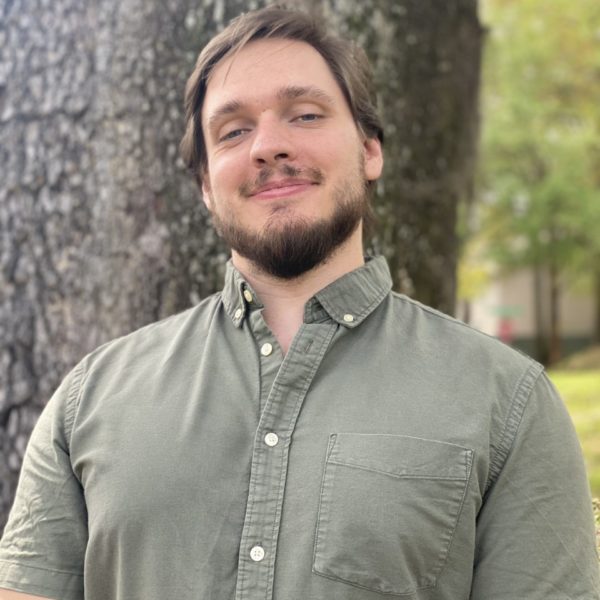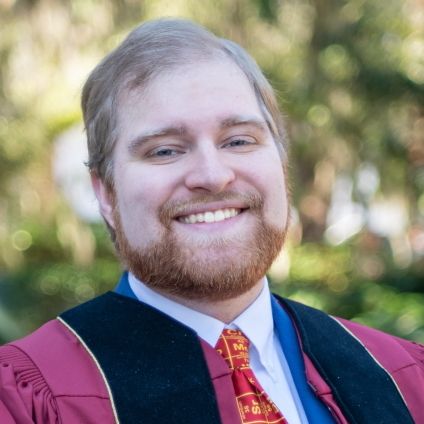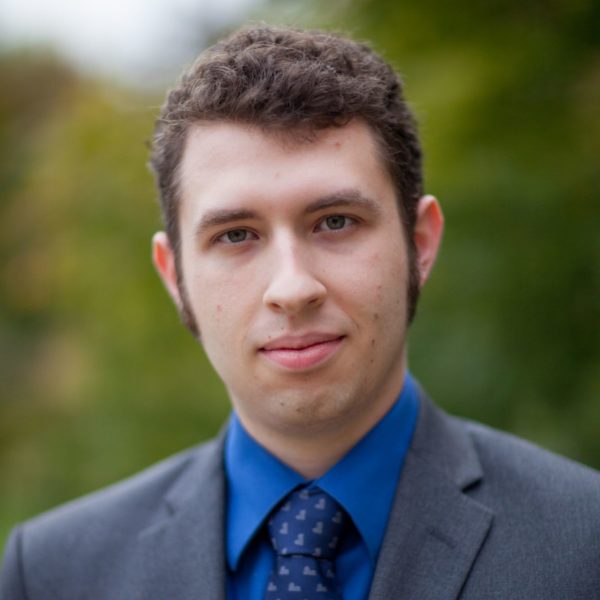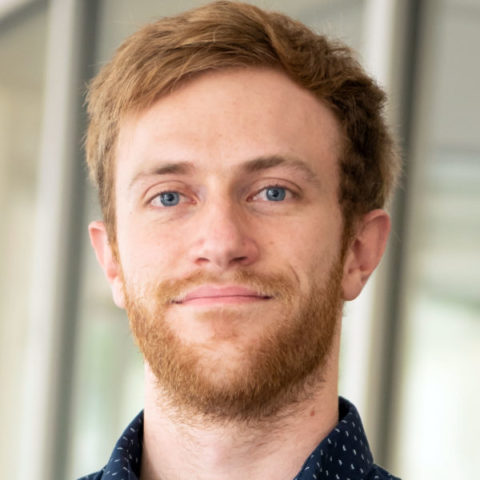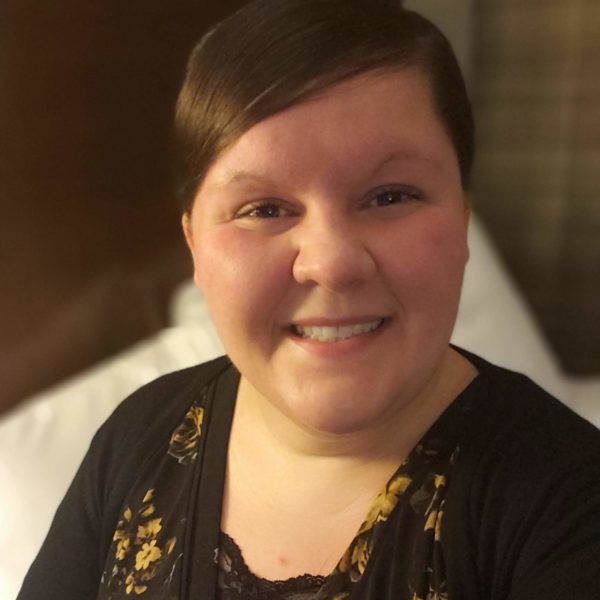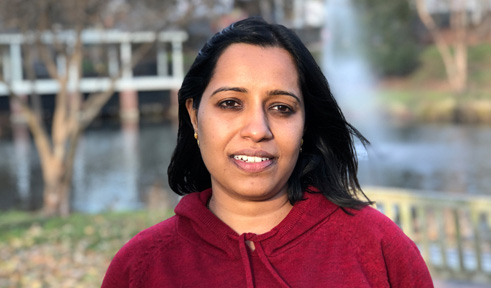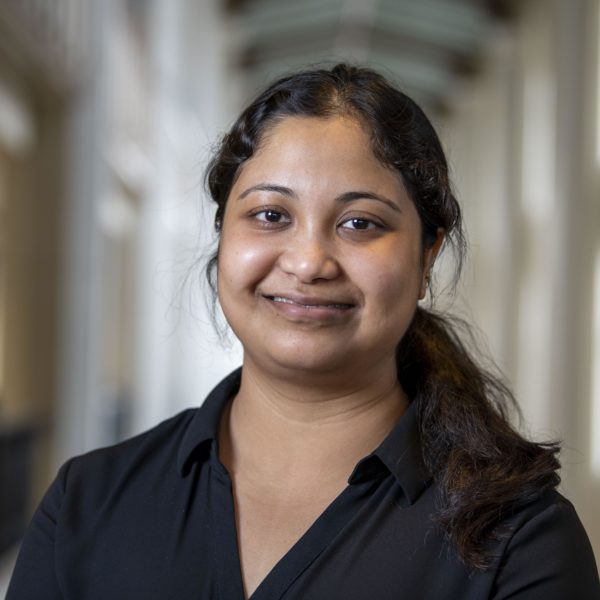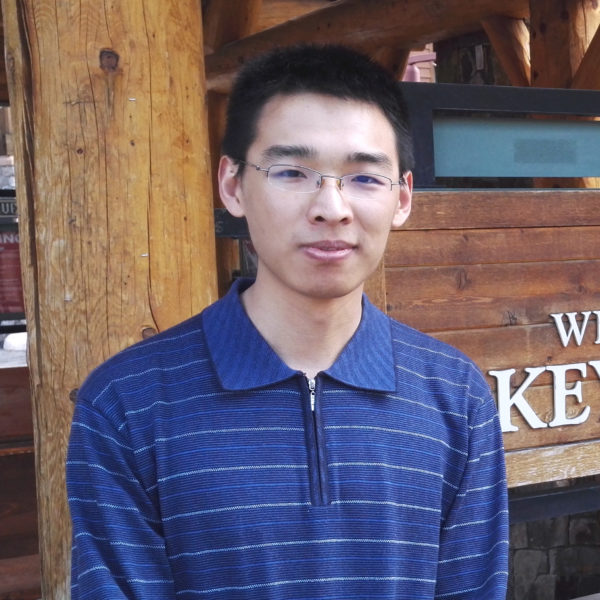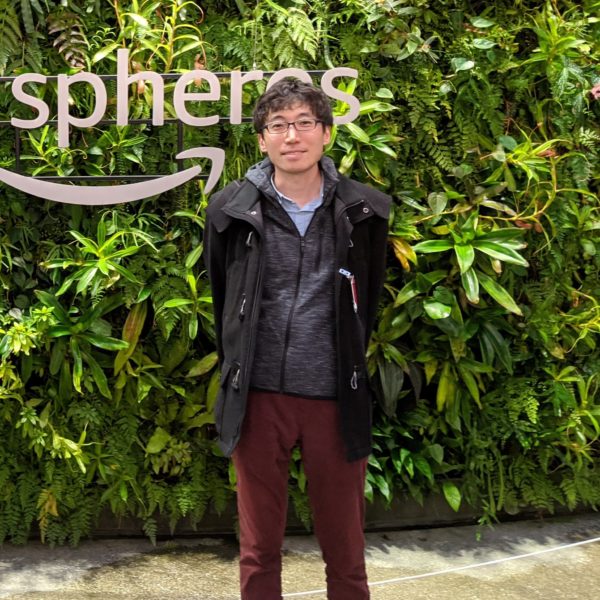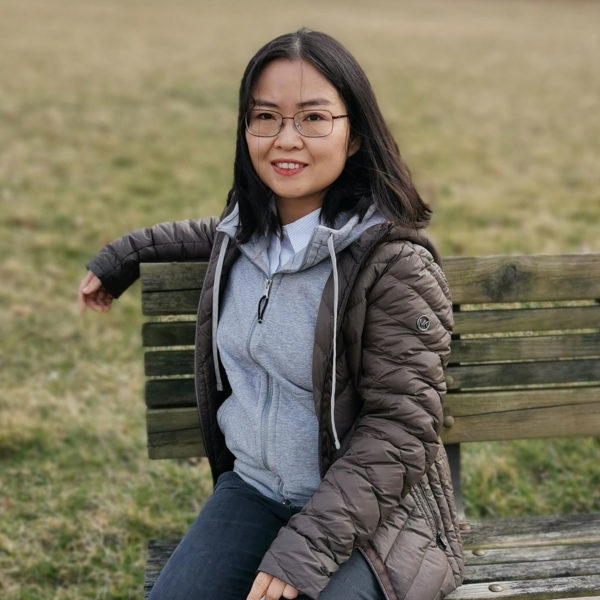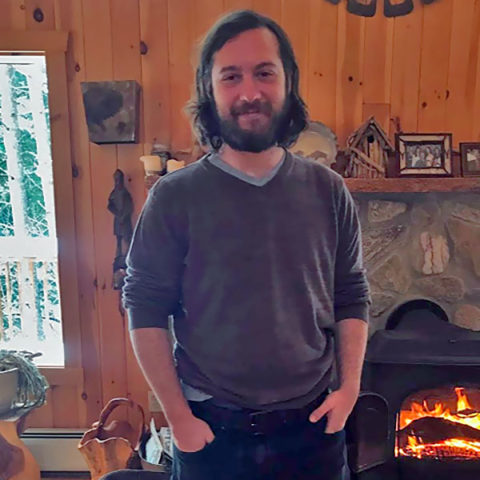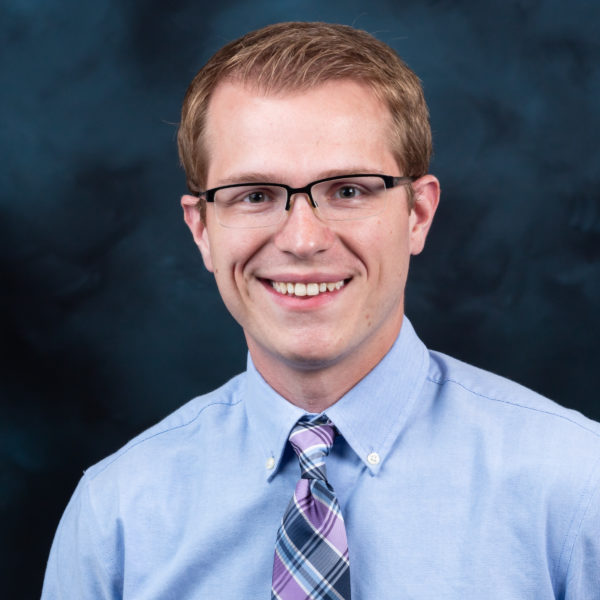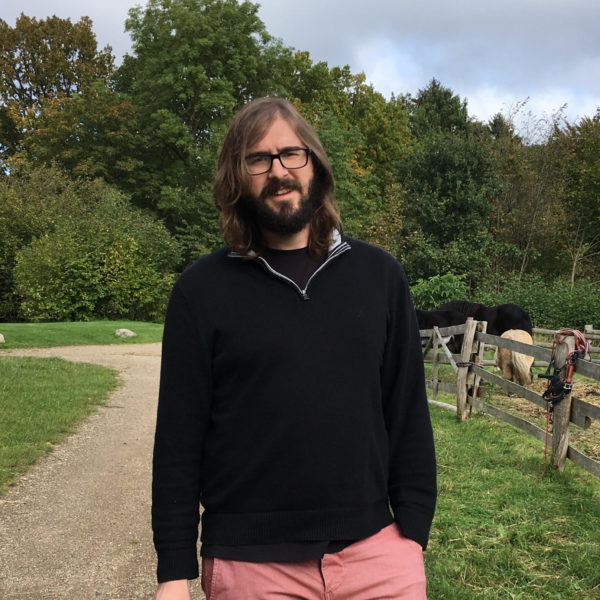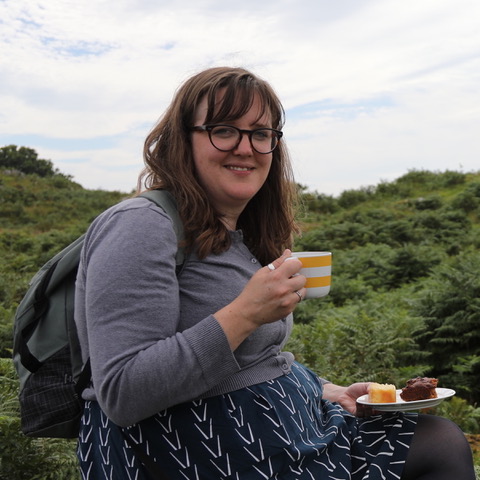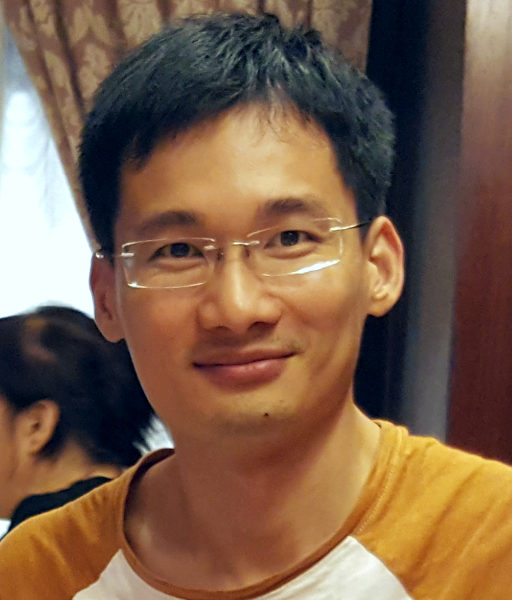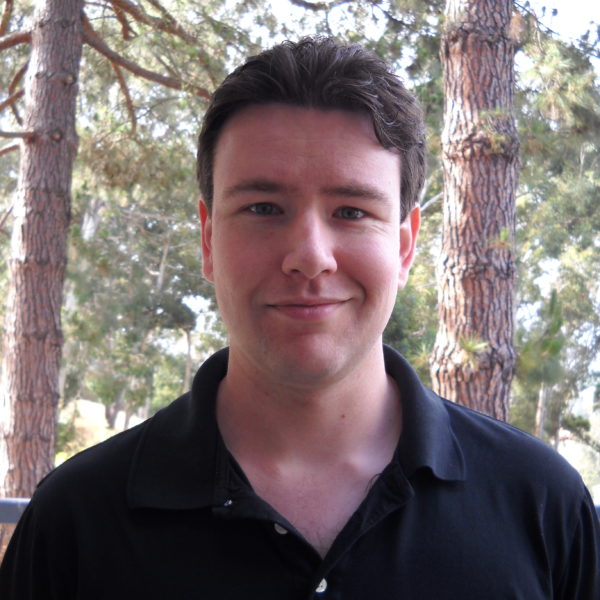Watch Video E2 Rotational Invariants of $0_{1}^{+}$ and $2_{1}^{+}$ for $^{106}Cd$: the Emergence of Collective Rotation
1:00 pm (CDT)
Speaker: Tim GrayHost: University of Tennessee, Knoxville
Tim Gray started his first postdoc at ORNL just under a year ago. Tim obtained his PHD with Andrew Stuchbery at ANU and his thesis led to two awards. In the short period Tim has spent at ORNL, he has shown great promise with leadership on the new CLARION2-TRINITY array at FSU (multiple experiments and preliminary analysis complete), and analysis of several GRETINA-CHICO2 datasets, including Cd-106 for which this abstract focuses on. The present results on Cd-106 contribute to a long line of work and interest in understanding the emergence of collectivity, particularly with regards to whether nuclei exhibit low-lying vibrational degrees of freedom. Tim's results suggest that the Cd isotopes in fact show an emergence of rotational not vibrational character. These results will no doubt be of wide interest but also controversy.
Watch Video Stellar electron-capture rates: recent theoretical and experimental advances.
1:00 pm (CDT)
Speaker: Simon GiraudHost: University of Tennessee
Simon is currently a postdoctoral researcher in the Charge-Exchange group of Prof. Remco Zegers at the NSCL/FRIB laboratory in Michigan. He received his Ph.D. in 2019 working with Dr. Beyhan Bastin, Dr. Anthea Fantina, Prof. Francesca Gulminelli and Dr. François de Oliveira Santos at Grand Accélérateur National d’Ions Lourds (GANIL) in France. His doctoral research was focused on mass measurements towards 78Ni and on the study of the effects of the masses on the dynamics of the core-collapse supernovae via simulations. At NSCL/FRIB, he continues performing research in nuclear astrophysics measuring charge-exchange reactions to constrain electron capture (EC) and decay rates that are important for astrophysical processes. In particular, he contributed to the development of a new technique based on the (d,2He) reaction in inverse kinematics with the active target AT-TPC and the S800 spectrometer at NSCL/FRIB, which makes it possible to constrain EC rates of neutron-rich nuclei. He also studied the effect of the finite temperature on the EC rate of neutron-rich nuclei around N=50 and the impact on the dynamics of core-collapse supernovae via simulations.
Watch Video First direct measurement of the $^{13}$N(alpha,p)$^{16}$O reaction for core-collapse supernovae
1:00 pm (CDT)
Speaker: Heshani JayatissaHost: Florida State University
Heshani is currently a postdoctoral researcher in the Low Energy Nuclear Physics group in the Physics Division of Argonne National Laboratory. She received her Ph.D. in 2019 working with Dr. Grigory Rogachev at the Texas A&M University Cyclotron Institute. Her doctoral research was focused on using sub-Coulomb alpha-transfer techniques to constrain the rates of astrophysically-relevant nuclear reactions. At Argonne, she continues performing research in nuclear astrophysics with Dr. Melina Avila, specifically measuring direct (alpha,p) and (alpha,xn) reactions relevant for nuclear astrophysics using the Multi-Sampling Ionization Chamber (MUSIC). She actively participates in nuclear astrophysics and structure measurements by the various experimental research groups at the Argonne ATLAS user facility using both stable and radioactive beams.
Precision Mass Measurements for the Astrophysical r process at Argonne National Laboratory
1:00 pm (CDT)
Speaker: Adrian ValverdeHost: Lawrence Berkeley National Laboratory
Adrian is currently a postdoctoral researcher from the University of Manitoba, stationed at Argonne National Laboratory. He received his Ph.D. from the University of Notre Dame in 2019 for work with Maxime Brodeur on precision measurements for the rp-process using the LEBIT Penning trap mass spectrometer at the NSCL, and for unitarity tests of the CKM matrix at the Nuclear Science Laboratory. Since coming to Argonne, he has taken a leading role on the development of the currently under construction N=126 Factory and on the ongoing mass measurement program with the Canadian Penning Trap at CARIBU.
Watch Video Precision Nuclear Physics with Microwaves: the $^{6}He$-CRES experiment
1:00 pm (CDT)
Speaker: Brent GranerHost: Texas A&M University
My scientific career began in the lab of Z.T. Lu while pursuing an A.B. degree at the University of Chicago, where I developed my research interests at the intersection of fundamental physics and precision measurement. I did my Ph.D. work on the electric dipole moment (EDM) of $^{199}$Hg in the lab of Blayne Heckel at the University of Washington, culminating in the publication of the present best limit on the EDM of any particle or atomic system (Graner et. al., PRL 161601 2016). Following my doctoral work, I chose to develop more experience in building a modern nuclear physics experiment \textit{ab initio}, becoming the first person to work full-time on the novel cyclotron radiation emission spectroscopy (CRES) experiment at the UW CENPA. Dedicated to a precision measurement of the beta-decay spectra in $^6$He and $^{19}$Ne, the $^6$HeCRES experiment has been designed and built by myself and others at CENPA in the last four years, recording its' first cyclotron radiation signals from individual electrons amidst the COVID-19 pandemic in March 2021.
Watch Video β-decay of $^{133}In$: a bridge between nuclear structure and astrophysics
1:00 pm (CDT)
Speaker: Zhengyu XuHost: U. of Dallas & U. of Kentucky
Zhengyu Xu is currently a postdoctoral researcher at the University of Tennessee in Knoxville (UTK). He received his Ph.D from the University of Tokyo in 2014, before when he focused on beta-decay half-life measurements of short lived nuclei at RIBF, RIKEN. Then he moved to KU Leuven in Belgium to study nuclear (dipole and quadrupole) moments of exotic nuclei using collinear laser spectroscopy at ISOLDE, CERN. In 2018, he started working on neutron TOF spectroscopy together with Prof. Robert Grzywacz and Prof. Miguel Madurga at UTK. His current research interest is to understand nuclear shell evolution towards neutron-drip line via the observation of neutron-unbound states populated in beta decay.
Watch Video Measurement of low-energy resonances in the 18O(a,y)22Ne reaction
1:00 pm (CDT)
Speaker: Alexander DombosHost: Texas A&M University
Alex is currently a postdoctoral research associate in the Nuclear Science Laboratory at the University of Notre Dame. He earned his PhD from Michigan State University under the supervision of Artemis Spyrou. His doctoral research focused on initiating the new experimental program at the National Superconducting Cyclotron Laboratory that uses total absorption spectroscopy to study beta decay. At the University of Notre Dame, he participates in the active research groups of Anna Simon and Manoel Couder. This work includes contributing to the first reaction studies using the St. George recoil separator, studying the impact of the gamma-ray strength function on gamma-process nucleosynthesis with network calculations, and leading an experiment using the Compact Accelerator System for Performing Astrophysical Research at the Sanford Underground Research Facility.
Watch Video Fission Yields of 238U and their significance for the reactor antineutrino anomaly
1:00 pm (CDT)
Speaker: Andrea MatteraHost: Michigan State University
Andrea Mattera has been a postdoctoral scientist at Brookhaven National Laboratory since 2019, after receiving his PhD at Uppsala University (Sweden). His work in Uppsala was split between the characterization of a neutron source for neutron-induced fission studies, and the measurement of fission product yields. At Brookhaven Andrea is part of the National Nuclear Data Center, where he is involved in the compilation and evaluation effort of fission yields, and in experimental activities for the study of decay data of fission products. During his time at the NNDC he also participated in the study of the effect of recent isomeric and independent fission yield data on reactor antineutrino spectra.
Watch Video Study of low-lying resonances in 26Si relevant for understanding the nucleosynthesis of Galactic 26Al
1:00 pm (CDT)
Speaker: Jesus PerelloHost: University of Notre Dame
Jesus Perello is a graduate student working under Dr. Sergio Almaraz-Calderon at Florida State University. He conducts his research at the John D. Fox Superconducting Linear Accelerator Laboratory in FSU, where he focuses on nuclear reactions relevant for nuclear structure and nuclear astrophysics. To investigate these reactions, he works with stable and radioactive ion beams, thin targets, techniques for detecting neutrons using CATRiNA - an array of deuterated liquid scintillators that he characterized and developed, as well as detector systems which include neutron and gamma-ray coincidence. For his contributions to neutron detector development at FSU, he received the 2020 J.W. Endowment "For his enthusiastic attitude and willingness to share his knowledge in state-of-the-art neutron detectors and in helping his fellow graduate and undergraduate students at the John D. Fox Laboratory". He obtained his MSc in Physics at FSU and will complete his doctoral studies by the summer of 2021.
Watch Video Experimental study of the 17F+12C fusion reaction using the ‘Encore’ active target detector and its implications for fusion of proton-halo systems
1:00 pm (CDT)
Speaker: Benjamin AsherHost: University of Tennessee
Ben Asher is a graduate student at Florida State University in the John D. Fox Accelerator laboratory under Dr. Sergio Almaraz-Calderon. He primarily studies fusion reactions using radioactive and isomeric beams with “Encore” – a Multi-Sampling Ionization Chamber that he also designed, built, and characterized. Along with his work with “Encore,” he has also been an integral part in the development of isomeric beams, as well as CATRiNA. In recognition of his contributions, Ben received the John D. Fox Award in 2020 for his excellent work, willingness to help, and expertise around the laboratory.
Watch Video From raw materials to fission studies
1:00 pm (CDT)
Speaker: Alexander ChemeyHost: University of North Carolina at Chapel Hill
Alexander “Sasha” Chemey is currently employed as a Postdoctoral Scholar in the Loveland Group at Oregon State University in the Department of Chemistry. His work there has been split between fundamental fission studies, actinide target-making, and new electronics development. He received his PhD in Chemistry in the Thomas Albrecht-Schönzart (previously Albrecht-Schmitt) group at Florida State University, where his dissertation was titled “Actinide Fluorides.” While at Florida State, he was a leader in the Department of Energy’s “Early Career Network,” organizing a symposium on the Federal R&D Budget Process for the 2017 National Meeting. He also received an award from the Department of Energy Office of Nuclear Technology in 2019 with the “Innovations in Nuclear Technology” program. His undergraduate research at Michigan State University was at the NSCL, working with Sean Liddick on algorithms for covert nuclear weapons tests by measurement of xenon isotopes.
Watch Video B(E2) measurements in light radioactive nuclei for guiding ab initio calculations
1:00 pm (CDT)
Speaker: Samuel HendersonHost: Lawrence Berkeley National Laboratory
Samuel Henderson is a graduate student working with Dr. Tan Ahn at the Notre Dame Nuclear Science Laboratory. His graduate work focuses on measuring electromagnetic transitions in light, radioactive nuclei using particle and gamma detectors. His PhD research has been based on measurements of B(E2) values in 8Li and 7Be. He has also worked extensively with theorists to compare these measurements to ab initio calculations to learn more about the structure of these nuclei. The eventual goal of this research is to forward the understanding of unusual structures in light nuclei, such as cluster structures and halo nuclei, and provide experimental benchmarks for ab initio calculations. After completion of his degree, Samuel intends to continue research in nuclear structure and also pursue research in support of nuclear energy applications.
Watch Video Almost Medium-Free Measurement of the Hoyle State Direct-Decay Component With a TPC
1:00 pm (CDT)
Speaker: Jack BishopHost: University of Notre Dame
Jack Bishop obtained his PhD from the University of Birmingham, UK in 2018 where he studied experimental signatures of alpha-condensates in light nuclei. Jack is currently a Postdoctoral Research Associate at the Cyclotron Institute, Texas A&M University where he has been a part of Grigory Rogachev’s group since 2018. He primarily focuses on studying light nuclear systems using beta-delayed charged-particle spectroscopy and neutron-induced reactions with the Texas Active Target (TexAT) TPC.
Watch Video Neutron-capture constraints for the astrophysical i-process
1:00 pm (CDT)
Speaker: Andrea RichardHost: Lawrence Berkeley National Laboratory
Andrea Richard obtained her Ph.D. from Ohio University in 2018 where she worked on in-beam and beta-decay spectroscopy of the A=33 isobars in the Island of Inversion. She received her M.S. degree from Ohio University in 2014 with a focus on neutron time-of-flight spectroscopy for the deuteron breakup reaction. Andrea is currently a Nuclear Science and Security Consortium (NSSC) postdoctoral fellow at the National Superconducting Cyclotron Laboratory at Michigan State University. The primary focus of her work is constraining neutron-capture cross sections for the astrophysical i-process via the β-Oslo method using data from experimental campaigns at the NSCL and Argonne National Laboratory.
Watch Video Study of 57Zn β-delayed proton emission and its impact on the 56Ni rp-process waiting point
1:00 pm (CDT)
Speaker: Mansi SaxenaHost: Texas A&M University
Dr. Mansi Saxena is currently working as Post-Doctoral Research Associate at Department of Physics and Astronomy, Ohio University in the group headed by Dr. Zach Meisel since Dec 2019. Prior to this she was working for two years at Heavy Ion Laboratory, University of Warsaw, Poland as an Adjunct Professor (Marie-Curie Fellow). She was awarded the eminent Marie Sklodowska-Curie Fellowship by the National Science Centre, Poland under the POLONEZ-1 Fellowship. Her research project was titled “Exploring Nuclear Structure of nuclei in the vicinity of Z = 50 closed shell using Coulomb Excitation technique”. This research project was funded by European Union’s Horizon 2020 research and innovation program under the Marie Sklodowska-Curie grant agreement No 665778. She received Ph.D degree from University of Delhi under Prof. Samit Mandal. At Ohio University, Dr. Saxena is currently leading the project on “Constraining the 56Ni bypass in the rp-process” with the experiment performed at NSCL in March 2020.
Watch Video Wobbling motion in 187 Au
1:00 pm (CDT)
Speaker: Nirupama SensharmaHost: University of Tennessee
Nirupama Sensharma is a graduate student working in the experimental low energy nuclear physics group at the University of Notre Dame. Her work focuses on using gamma spectroscopic techniques to study the exotic phenomena exhibited by triaxial nuclei. Her PhD research is based on investigating the rare processes of wobbling and chirality in the triaxial 135Pr and 187Au nuclei as well as looking for other regions in the nuclear chart where triaxiality is expected. In addition to nuclear physics research, she is an avid supporter of Nuclear Energy and has founded an initiative (Nuclear Energy - The Better Energy) to promote awareness about the peaceful uses of Nuclear Energy within society by organizing informational campaigns and outreach events. As the founder, she supervises an international team of 9 members based in US, India, France, Germany and Spain and serves as the editor-in-chief of a bimonthly magazine and regularly writes/edits articles and newsletters published by the team for over 900 subscribers.
Watch Video β-decay spectroscopy of 25 Si using the Gaseous Detector with Germanium Tagging system
1:00 pm (CDT)
Speaker: Lijie SunHost: University of Notre Dame
Lijie Sun is currently a postdoc at NSCL working with Prof. Chris Wrede. Lijie received his PhD from the China Institute of Atomic Energy in July 2017. Then he joined Shanghai Jiao Tong University as a postdoc. His research in China focused on the experimental study of beta decay of nuclei close to the proton-drip line and their astrophysical implications. In October 2018, he joined NSCL and has been focused on three projects. 1) The upgrade of the Doppler Shift Lifetime Detection System at TRIUMF. 2) Application of the Particle-X-ray Coincidence Technique to the measurement of resonances of interest to Type I X-ray bursts on accreting neutron stars. 3) The analysis of 25Si beta-decay data acquired using the GADGET system including a Doppler Broadening technique.
How many neutrons are emitted after the beta decays of r-process nuclei?
1:00 pm (CDT)
Speaker: Rin Yokoyama (横山 輪)Host: Michigan State University
Rin Yokoyama is a postdoctoral research associate at the University of Tennessee, Knoxville, working in the Experimental Low Energy Nuclear Science group. He finished his Ph.D. at the University of Tokyo under Prof. Susumu Shimoura in 2016. At Tokyo, he worked on nuclear shape evolution in the neutron-rich rare-earth nuclei by isomer spectroscopy. Currently, his research has focused on understanding the beta-delayed neutron emission process important for the astrophysical r-process calculations.
Watch Video Probing exotic structure using one-nucleon transfer reactions
1:00 pm (CDT)
Speaker: Jie ChenHost: Lawrence Berkeley National Laboratory
Jie Chen is now a postdoctoral researcher at Michigan State University and the Facility for Rare Isotope Beams, working in the AT-TPC group. She got her Ph.D. at Peking University in 2016 and had been a postdoctoral researcher in Argonne National Laboratory in the following three years. Her research interest focuses on the study of the single-particle structures of exotic or weakly bound nuclei via transfer reactions using various detection systems.
Watch Video A Crack in Nuclear Mirror Symmetry
1:00 pm (CDT)
Speaker: Daniel E.M. HoffHost: Lawrence Berkeley National Laboratory
Dan is currently a postdoctoral research associate at University of Massachusetts Lowell, joining shortly after finishing his PhD at Washington University in St. Louis under Dr. Lee Sobotka in 2018. He has worked on many different projects in his nuclear science career from searching for neutron-rich Hf K-isomers to studying isospin symmetry with beta-decay spectroscopy. He finds the nuclear landscape rich with systems to explore and his current research interests include nuclear reaction dynamics, nuclear structure, and nuclear astrophysics.
Watch Video Advanced Experimental Equipment for Proton-Rich Nucleosynthesis
1:00 pm (CDT)
Speaker: Matthew HallHost: University of Tennessee
Matt is a postdoctoral research associate at Oak Ridge National Laboratory. He received his PhD from the University of Notre Dame in 2019, where he worked with Dr. Daniel Bardayan. At Notre Dame, Matt worked primarily on nuclear astrophysics reactions important for nova nucleosynthesis and developing radioactive ion beams with TwinSol. Currently, his work has focused on the design of a gas jet target for solenoidal spectrometers, in addition to finalizing more results from his PhD research.
Watch Video New Constraints on Sodium Production in Globular Clusters From the 23Na(3He, d)24Mg Reaction
1:00 pm (CDT)
Speaker: Caleb MarshallHost: Texas A&M University
Caleb is a graduate student at North Carolina State University working under Dr. Richard Longland. His graduate work began in 2014 and has been focused on using high resolution magnetic spectroscopy to indirectly study reactions of interest to nuclear astrophysics using transfer reactions. After the completion of his degree, Caleb will begin a postdoc at Ohio University. This position will be stationed at Michigan State University working with the SECAR collaboration using inverse kinematics to directly measure reactions of astrophysical interest.
Watch Video Detecting β-delayed neutron emission using Recoil-ion spectroscopy
1:00 pm (CDT)
Speaker: Gemma WilsonHost: Lawrence Berkeley National Laboratory
Gemma is a senior postdoctoral research associate at Louisiana State University, based at Argonne National Laboratory. Gemma received her PhD, on transfer reactions around the Island of Inversion, from the University of Surrey in 2012. She then moved across the country and across the Sègre chart to do a postdoc at the University of York in β-delayed fission of heavy, neutron-deficient nuclei. Her next move brought her to the US, to UMass Lowell before taking a position with LSU. Her current research focusses on β-delayed neutron emission, while continuing her work on transfer reactions and developing in-flight radioactive beams at Argonne.
Single-particle spectroscopy of exotic nuclei: the cases of 207Hg and 25F
1:00 pm (CDT)
Speaker: Tsz Leung Tang (Ryan)Host: University of Notre Dame
Ryan has been a postdoctoral researcher at Argonne National Laboratory since 2017. He received his PhD in 2016 under the supervision of Dr. Tomohiro Uesaka at the University of Tokyo. His PhD works focused on solid polarized proton target, high energy quasi-free (p,2p) knockout reaction, and DAQ development. He continued that effort as a postdoctoral researcher at the RIKEN Nishina Center, Japan for about a year. After he moved to Argonne, Ryan shifted his attention to the low energy transfer reactions. Ryan’s research interests mainly focus on single-particle spectroscopy from light to heavy nuclei and system automation.
Watch Video Octupole Collectivity: The Odd Case of Neutron-Rich 143Ba
1:00 pm (CDT)
Speaker: Chris MorseHost: University of Tennessee
Chris is a Postdoctoral scholar at Lawrence Berkeley National Laboratory. He began his research career as a graduate student at the National Superconducting Cyclotron Laboratory at Michigan State University, receiving his PhD in 2015 under the supervision of Prof. Hiro Iwasaki. After graduating, he held a postdoctoral research position at the University of Massachusetts Lowell before moving to Berkeley in 2018. Chris' research interests lie in the area of low-energy nuclear structure. While his curiosity was first piqued by studies related to isospin symmetry, recently his focus has shifted to the subjects of octupole collectivity as well as the structure of the heaviest isotopes.
